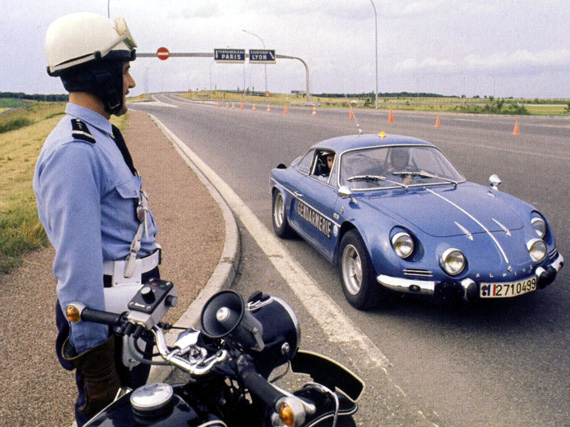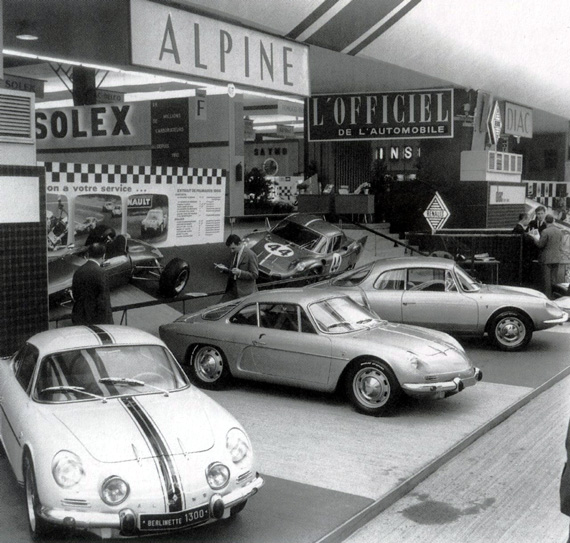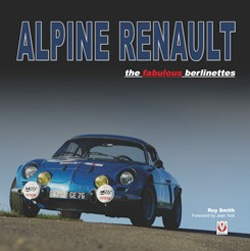 Alpine Renault – The fabulous berlinettes
Alpine Renault – The fabulous berlinettes
By Roy P. Smith
25x25cm 240 pages 380 pictures
ISBN: 978-1-845844-04-2
£ 75.00
Order here
Review by Pete Vack
Roy P. Smith is no slouch when it comes to writing. He’s just added his fifth major work within a seven year span…that’s an incredible amount of research and writing, made even more difficult as he is a Brit and takes on French subjects. [He even has time to write for VeloceToday, thank goodness!].
In a sense, with these five books, he is dipping from the same well. But the well is both deep and so far unexplored by the English speaking world. His first three books were Alpine & Renault, the development of the revolutionary Turbo F1 car published in2008, followed by Alpine & Renault, the sports prototypes Volumes One and Two in 2010; by 2013 his take on the history of Gordini, a true racing legend was published. Late in 2013 his latest, Alpine Renault, the fabulous berlinettes was completed and will no doubt prove to be the most popular of all.
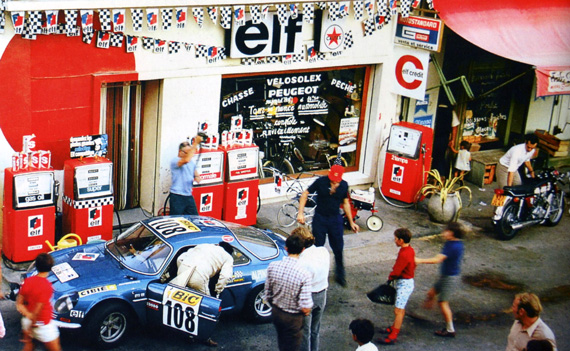
Not a Retro or Goodwood setup. This is a scene from the Tour de France in 1970. The Alpine is beginning its winning streak.
With the publication of the Alpine Renault, one might say Smith has ably exhausted the subject matter, although it seems there may be room for a book on the Alpine A310. But Smith is now onto Porsche 924 Carrera GT/GTS/GTR models; again new ground but, much to our loss; a good book on the Renault and Panhard derivatives such as Rosier, Ferry, Monopole, etc. would be right up his alley and would cover new ground, at least in English.
When reading a book, one often thinks “Well, if I had to do this book, how would I like to do it?” Like designing a car, the creation of a book has to do with space, a backbone, colors, weight, organization and overall design. With the Alpine berlinettes, which were produced in roughly three series over a period of 20 years, from 1956 to 1976, one has a lot of organizational options. Smith has chosen the straight chronological method to organize the life and times of the berlinettes, which works fine.
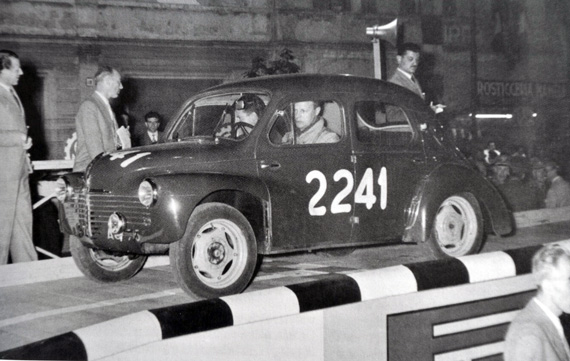
Redele began his competition career rallying and racing factory competition 4CV; here at the Mille Miglia in 1952.
The central part of the book consists of the amazing rally successes achieved by the Alpine A110 from 1969 to 1976, followed by a mind-blowing list of placings in major races and rallies by the Alpines from 1954 to 1979, when they finally faded from the scene. Allow us to repeat a point made by Smith in his article on the Alpine Exhibit in this week’s VT: Alpine took a 1-2-3 with the A110 at Monte Carlo in 1971 and at the end of the year were winners of the International Rally Championship for Marques. Then in 1973 they won the first WRC (World Rally Championship) with another 1-2-3 at Monte Carlo, and six more victories in the 13 events. The Alpine was the first Rally Supercar.
This section is full of information about the events, how the cars placed, interview quotes from the team manager, drivers and mechanics. Smith’s first person interviews and quotes from other sources make the journey interesting, relevant and add a great deal to the understanding of Rédélé’s manufacturing and competition operation, which in some ways reflected Bugatti’s fiefdom. With the help of his wife Helen, Smith conquered the language barrier to obtain insightful information from the people that made the history. “I also worked with French companies for 20 years so that helps. I can arrive at the Gare du Nord with no worries!! Some of the guys like Jean Vinatier and Mauro Bianchi speak English so I have to speak French. And I had a house France for 10 years, so we managed.” Notably, there are very few associated with the Alpine team and operations that Smith did not interview, including Jean Todt, who recalled his years with the Alpine berlinette with fondness in the foreward.
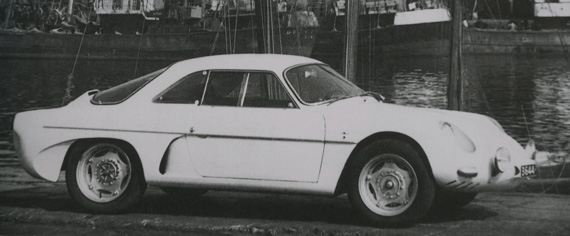
The first A108. If the roofline looks familiar, it is because the top was a mold taken from an Alfa Sprint coupe.
Perhaps even more interesting are the first two chapters, “Born to Win” and “Dreams to Reality”, which together comprise the early history and development of the cars Jean Rédélé envisioned. Young and ambitious, after WWII Rédélé took over one of his father’s Renault garages and worked hard to make it successful. By 1950 he was able to obtain on a competition 4CV from the factory and placed well in both major and minor rallies and races. In 1952 he married Michelle Escoffier, the daughter of a well do to Renault distributor. Smith tells the story in detail, and provides much needed photos and histories of the early Alpine, including the still-born deal with American Zark W. Reed to produce the Marquis.
Which in turn leads us to another fascinating chapter in Alpine history. Early on Rédélé felt that his own automobile operation would succeed if 1. He used a majority of readily available production car parts. 2. The cars did well in competitions throughout Europe, and 3. They could be licensed to be built overseas. The ill-fated American experience with Reed did not deter Rédélé, and as Smith relates in special chapter, by the 1960s Alpine berlinettes were being produced in Brazil by Willys and called the Interlagos; about 1500 A108s were produced. In Mexico, a less successful attempt nevertheless resulted in 693 Dinalpins being produced using R-8 running gear. Wanting to learn more about fiberglass production, a Bulgarian company wanted to create a line of A110s but only a few were ever completed. By far the most successful was also perhaps the least well known; in Spain, the Fabricacion de Automoviles Sociedad Anomina (FASA), produced 1904 cars, consisting of both the A108 cabriolets, A110 coupes.
Win Roy Smith’s Alpine Book!
Sign up to WIN Roy Smith’s brand new Alpine Berlinettes book, compliments of our friends at Veloce Publishing. Same rules apply as usual; only Premium Subscribers are eligible to win the drawing and MUST contact vack@cox.net to enter. Free shipping world wide. Another good reason to become a Premium Subscriber now.
Over the years there was constant improvement and development of a car which, in its original guise known as the “Coach,” was a 4CV with a fiberglass body. Throughout the text in roughly chronological order, the car’s development is described along the way. However, Smith also includes a complete description of each model in a separate chapter but begins with the 1962 A110. Even then the model line-up is complex and hard to follow. Thank goodness Smith has done that for us. Coach and A108 models are on their own though!
Smith has got a lot to say about the Alpines, but with limited space. Pages are money, and each type of book has only a limited number of pages to fill. Hence, the borders are truly marginal, being reduced from ½ inch to ¼ inch, and there is an unfortunate lack of subheads throughout the long and often complex text, giving a sense of run- on.
The berlinette, as evocative and historically important as it is, has attracted a large number of enthusiasts, and new owners. At first, Smith did not want to write a book on the berlinette but became convinced that despite the occupational hazards of getting something wrong—actual or perceived – along the way, it was worth doing. Wisely, he stayed away from listing chassis numbers unless they could be 100 % verifiable – a rare feat in Alpinedom. After the book came out he emailed us with a complaint . “Pete there is an error on one of the pages ref the 71 Monte Carlo…god knows how it got there but the picture captions says Andersson, while the car is Andruet… both on the same page!! Argh!” But there seem to be few other errors, even among the hard core guys. And as we said, there is a LOT going on in these 240 pages.
Some books are a must have, others are only for hard core historians or enthusiasts. This one is for both…a wonderful history of one of France’s most successful post war cars which fills many a gap in motoring history. And if you’re a hard core Alpine nut, well, need we say more? HIGHLY recommended!
